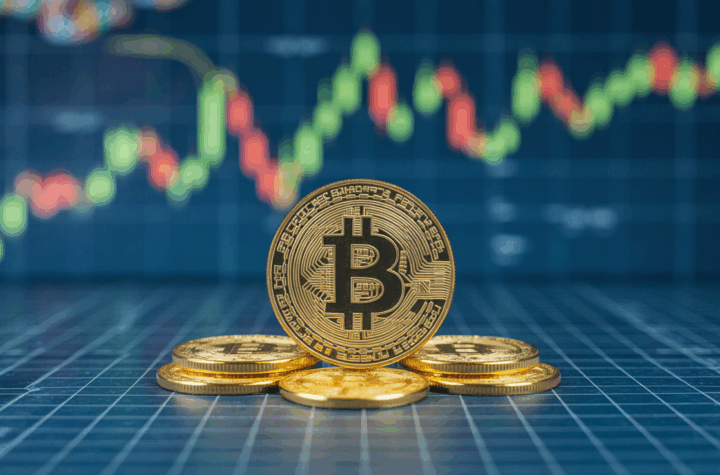
U.S. Tariffs Stir Up Crypto Volatility, But Long-Term Bullish Sentiment on Bitcoin Grows
The recent wave of tariffs introduced by the Trump administration has ignited both turmoil and potential opportunities in global markets, with cryptocurrencies being swept up in the uncertainty. Traders are adapting their strategies to navigate the shifting economic landscape, while Bitcoin (BTC) is increasingly seen as a long-term hedge against inflation and economic instability.
Tariffs, which raise the cost of imports, are often linked to inflation, supply chain disruptions, and fluctuations in currency value. In the immediate aftermath of the tariffs, the U.S. dollar has strengthened, which could put downward pressure on crypto assets as investors flock to traditional safe havens such as gold.
However, many within the crypto community are keeping an eye on the long-term potential of Bitcoin, viewing it as a potential store of value amid growing inflationary concerns. If central banks respond to the tariffs with accommodative policies, the stage could be set for Bitcoin to thrive as an alternative to traditional fiat currencies.
Rick Maeda, Research Analyst at Presto Research
The announcement of Trump’s tariffs, including the 34% levy on China and the 25% tariff on car imports, triggered a market correction. Bitcoin briefly dipped to the $82,000 level, while Ethereum suffered a more significant decline, falling below $1,800. Despite these fluctuations, the options market has shown resilience, with implied volatility remaining steady, suggesting that traders are preparing for further uncertainty.
Bitcoin continues to be heavily influenced by macroeconomic events like trade wars, making it difficult to predict short-term price movements. With Bitcoin remaining closely tied to global economic policies, it may face additional pressure in the coming months until stronger internal narratives drive growth.
Enmanuel Cardozo, Market Analyst at Brickken
The tariffs, which came into effect on April 2, 2025, have created a wave of volatility in the crypto market. Bitcoin, which had been hovering around $88,500, quickly dropped to $82,000, reflecting broader market reactions to the uncertainty caused by trade policy shifts. In the short term, crypto assets are caught in a consolidation phase, with retail investors flocking to safer investments like gold and bonds, while institutional investors see this as an opportunity to accumulate Bitcoin at lower levels.
However, looking ahead, there are positive signs for Bitcoin. The tariffs could weaken the dollar’s dominance, making Bitcoin a more appealing hedge against inflation. Moreover, Bitcoin’s decentralized nature and ability to facilitate cross-border transactions might become even more crucial in a world facing escalating trade barriers.
Alvin Kan, COO at Bitget Wallet
The recent tariffs, coupled with concerns about stagflation—a scenario where prices rise without economic growth—have put downward pressure on the U.S. dollar. This dynamic is leading many traders to view Bitcoin as a safe alternative. As traditional fiat currencies face increasing volatility, Bitcoin’s decentralized nature makes it an attractive option for capital preservation.
The weakening of the dollar could fuel demand for Bitcoin as a store of value, especially if the inflationary pressures resulting from tariffs continue to build. In a fragmented global economy, Bitcoin’s appeal as a hedge against traditional economic risks may grow, driving more institutional and retail investors to accumulate the cryptocurrency.
Augustine Fan, Head of Insights at SignalPlus
The global market is experiencing a risk-off phase, as the recent tariffs and their potential impact on U.S. economic growth weigh heavily on investor sentiment. While many traditional assets are taking a hit, Bitcoin has shown resilience, holding above the $80,000 mark. The dollar’s weakening, along with rising gold prices, is adding fuel to Bitcoin’s case as a flight-to-quality asset.
Despite the current volatility, Bitcoin remains well-positioned for long-term growth. As investors continue to seek alternatives to traditional fiat currencies, Bitcoin’s role as a store of value and inflation hedge will likely continue to attract increasing interest, particularly as global trade tensions persist.
Ryan Lee, Chief Analyst at Bitget Research
The U.S. tariffs, which range from 10% to 49% on key imports, have triggered an initial market sell-off, with Bitcoin and other cryptocurrencies experiencing sharp declines. As fear and uncertainty ripple through the market, many traders are flocking to stablecoins to avoid further volatility. However, the long-term implications of these tariffs on the U.S. economy could drive more investors toward Bitcoin as an inflation hedge.
Higher import costs, particularly for goods from China, could accelerate inflation, putting additional pressure on the dollar and traditional markets. As a result, Bitcoin’s decentralized nature and deflationary characteristics could make it an increasingly attractive alternative. Traders are already beginning to accumulate Bitcoin, anticipating that the crypto market will benefit once the initial shock from the tariffs subsides.






More Stories
DOGE drops to $0.18 amid long-term holder exits and a looming death-cross price pattern.
Asia Markets: Cautious Calm Settles Over Bitcoin as Risk Positions Rebuild
“Analyst Dubs It ‘Bitcoin’s Silent IPO’ While Dissecting Market Stagnation in Viral Essay”